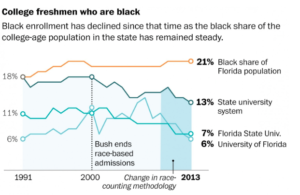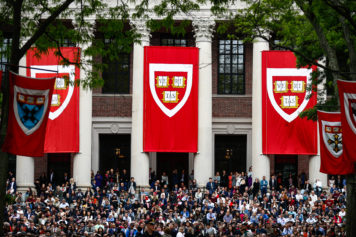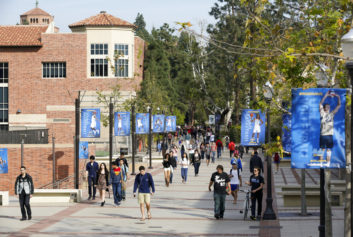
Both the University of Florida and Florida State University are dealing with significant drops in the rate of Black students enrolled at the universities, which has resulted in a ripple effect of events and organizations that appeal to Black students starting to disappear.
The disconcerting drops in Black student enrollment on the campuses not only prove the necessity of affirmative action but it also has many media outlets specifically slamming Bush’s claims that his One Florida legislation, which put an end to race based affirmative action in the state, was a good thing even for Black students.
Administrators at the state’s premiere universities reported that they fear what’s going to happen to their hopes of a diverse campus in the wake of the legislation’s aftermath.
“If we don’t address this in the next two or three years, I think we’re going to have a problem,” Brandon Bowden, the assistant vice president for student affairs at Florida State, told the Washington Post. “There will be so few black students on our campus that prospective students [who are black] will choose not to come here because they see no one who looks like them.”
Recent trends would suggest Bowden is absolutely right.
At Florida State, the percentage of Black freshman has dropped 15 percent from 2000 to 2009.
University of Florida hasn’t held up any better with the percent of their Black freshmen dropping nearly 10 percent in 2013.
Overall, Florida’s state university system is continuing to have a disproportionately low amount of Black students and the numbers show no signs of improving soon.
While Black people account for more than 20 percent of the state’s population, they only consist of roughly 13 percent of those enrolled in the state university system.
All these numbers and statistics suggest that the expected presidential hopeful for the Republican Party has rooted a key part of his campaign in a lie.
“We ended up having a system where there were more African American and Hispanic kids attending our university system than prior to the system that was discriminatory,” the former governor said at a recent conference as a crowd of conservative activists looked on.
As it turns out, the number of “minority” students enrolling in Florida universities did see a slight increase but Bush’s policy doesn’t get credit for that.
According to PolitiFact, this trend was much more likely caused by an increase in the overall population of Hispanic students in the state. That trend also ignores the falling rates for Black student enrollment.
When the actual percentages and proportions are compared, Black students are still greatly underrepresented in Florida’s university system.
“There is no hard evidence Bush’s One Florida program had much to do with the enrollment changes,” the PolitiFact article continued. “Experts say demographics, graduation rates and state-sponsored scholarship money have had more influence.”
In addition to reducing the percentage of Black students, the legislation’s ripple effect is causing Black students to lose some of the few resources they have on campus that were tailored to their needs and interests.
As fewer Black students make their way to the universities’ campuses, fewer Black students are attending step shows, supporting multiracial talent shows or utilizing campus facilities that appeal to the Black student body.
At the University of Florida, the school’s Black History Month concert was canceled back in February while the annual step show is losing major sponsors due to its dwindling student attendance.
Despite countless efforts by the universities, like offering mentorship and free tuition to at least 300 first-generation students, they can’t seem to get their Black student populations to rebound under the One Florida law.
One student, Kenya Lipplett admitted that the lack of diversity was a key reason she decided not to attend the University of Florida.
“I didn’t see a lot of Black people when I visited UF, and that made me very cautious about attending,” Liplett told the Washington Post. “I didn’t want to feel that I had to put on a mask because I was around people who didn’t understand my culture, and I didn’t want to be a part of some statistic to help their numbers grow.”
That’s the perception many students have of the universities now but until Bush’s ban on affirmative action is lifted, the Black student population at both of the Florida universities may only continue to plummet.



